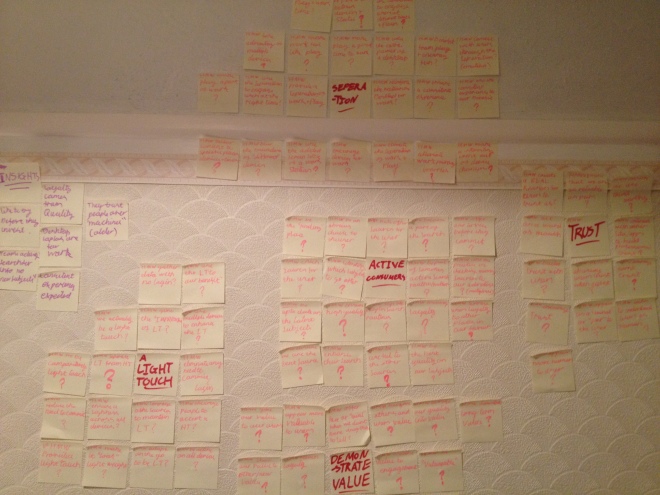Create
The create phase of the human centered design methodology is again split into steps like the hear phase. Some of these can be missed or left out depending on the needs of the team. In this case I left out two methods, Method: Participatory Co-Design and Method: Create Frameworks. This was because co-design was unfortunately something which I didn’t have the people to perform and the frameworks were simply unnecessary for the project. This first post is about steps 1 through 4 as this represents setting up the data I collected in the hear phase, drawing conclusions and preparing it all to be properly used for the brainstorming and designing.
Step 1: Develop the Approach
Method: Empathic Design
This was more of a state of mind than a step, ensuring that you were in the right frame of mind to understand the human at the centre of the design, after the in context immersion and data gather through the information as well as being part of the demographic I felt like I was more than ready to go to the next step.
Step 2: Share Stories
This step was interesting as I was not “sharing” the stories with anybody. But writing out individuals stories I had recorded or put together during the research gave me an interesting view into how this step could be useful. Half way through the phase I was also piecing together small insights and drawing links between many of the stories. I found that while circumstance and objective where often different there where definite patterns which could be found which lead to the next stage.
Step 3: Identify Patterns
Method: Extract Key Insights
Method: Find Themes
This was an extension of what I had started to do in the previous phase. Taking collections of similar stories and building insights and noticing patterns among the data. It was here that I started to see the changing patterns between ages but also the similarities which occurred between unforeseen areas such as the clear divide in many cases between what people consider “work” and “pleasure” when it came to devices which were being used. Overall the phase was simple but the effect was help reveal a large number of “truths”.
The truths where then organised into simple theme from which to work with, this again was a way of cutting down and getting to the core needs of the user or human at the centre if the design process.
Step 4: Create Opportunity Areas
Step four creating opportunity was one of the more challenging phases. However by forcing you to think in terms of questions and not solutions you can begin to see how this opens up your creative thinking as you are simultaneously thinking of answers and new directions for the project to go it. The difficult part will be in cutting down the opportunities to four or five for the next phase as many of them asked questions which could be very interesting to answer and see the direction it could take the project.
Overall the create phase has been easier going so far than the hear phase for a single person to carry out. However the amount of the ideas or extra creative thinking I may be missing out on is a major and obvious disadvantages alongside the fact that I could be missing out important concepts or theories simply because they are unknown to me. Given a full team this phase so far would have been almost unchanged by any adaptations or alterations from my other research.




